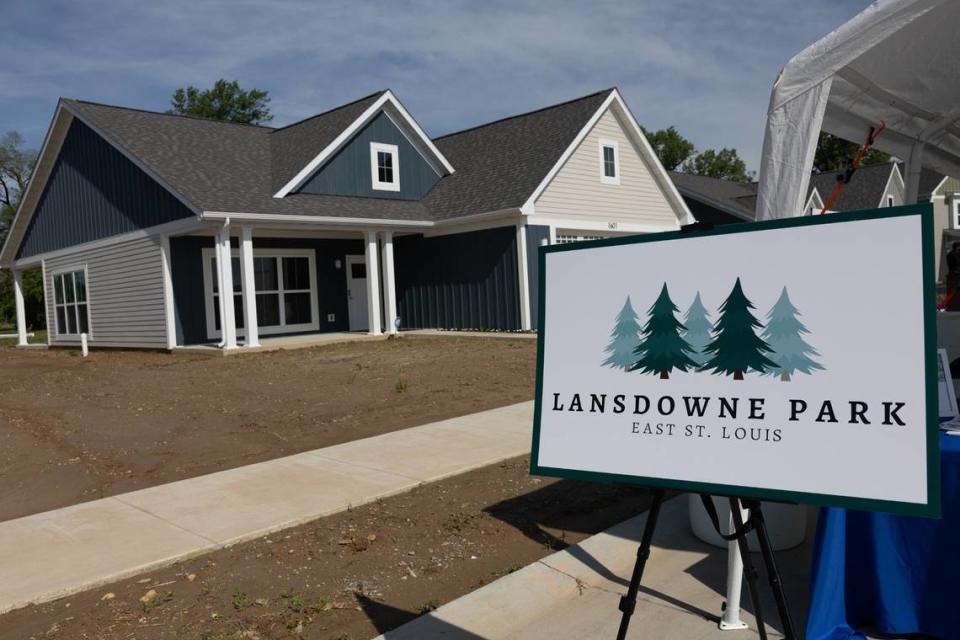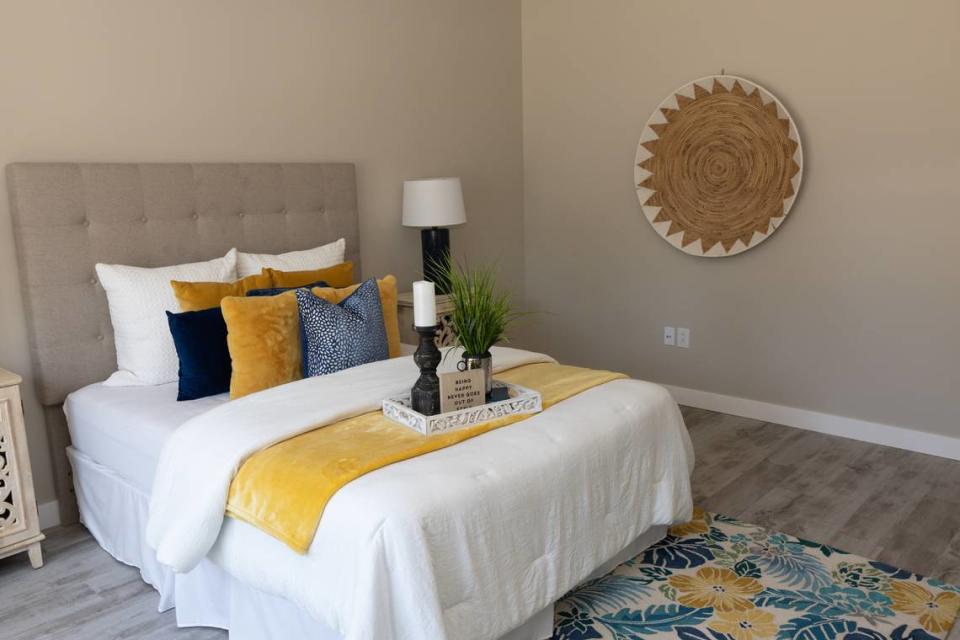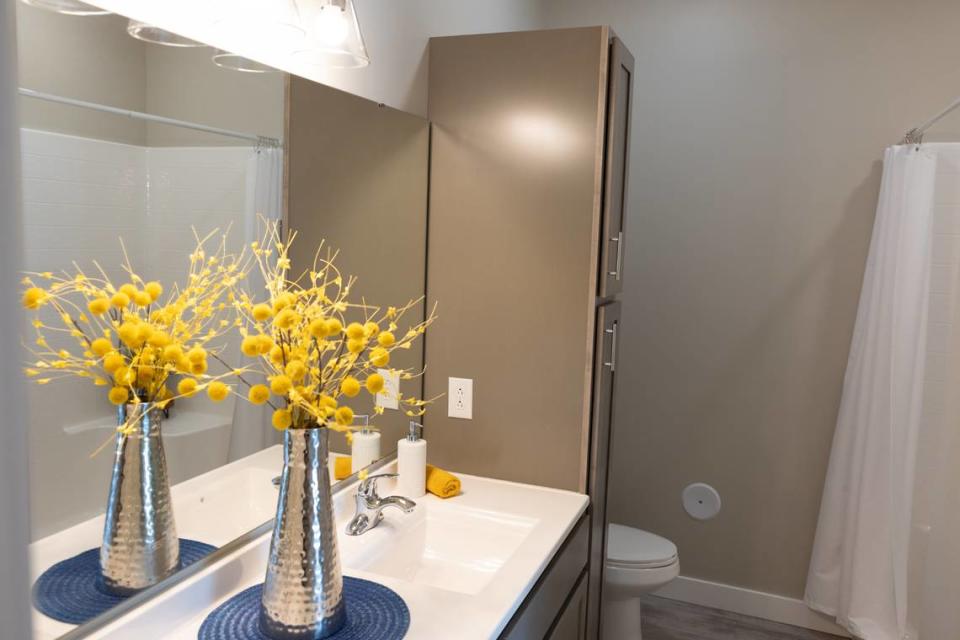Nonprofit wants to attract middle-class residents to East St. Louis with $360,000 homes
This story was originally published by St. Louis Public Radio., a BND news partner.
By the end of the summer, a new subdivision in East St. Louis will be complete with 20 homes that are part of the first major private housing development in the city in the last 40 years.
Lansdowne Up, the religious nonprofit building the homes, says it’s designed to help grow East St Louis, which has lost a vast majority of its population since peaking in the 1950s.
“We’re hoping that having homes like this will bring in a middle-class population,” said Kevin Green, director of administration for Lansdowne Up. “East St. Louis used to be a predominantly middle-class city, and we want to see a return back to that.”

So far, nine of the three-bedroom homes are complete, and one is occupied, Green said. The homes are listed at $360,000 each.
The subdivision — known as Lansdowne Park — sits near North 25th Street and Gross Avenue on the north side of town. Another housing effort is planned near Nectar Avenue, about a half-mile to the west.
Green spoke with St. Louis Public Radio’s Metro East reporter Will Bauer. The following conversation has been edited for length and clarity.
Will Bauer: What kind of housing challenges does the city face from your vantage point?
Kevin Green: If you look at East St. Louis, it’s been a long time since we’ve actually had market rate housing. As an example, the home that I live in is 102 years old. As we’ve had new housing coming into the city, in many cases over the last 30-40 years, it’s been new public housing. It’s been government-subsidized housing. We haven’t really had a lot of new private homes built in the city.
This has been a challenge for the city — for us bringing a subdivision into the city. The city basically had to relearn what it’s like to work with a developer. And, technically, we’re not a developer, but we are someone who has come in with private financing to actually build homes. And it’s been an interesting challenge for the city even to get to that point just because they’ve been so used to public-subsidized housing.
Bauer: What do you hope these homes that you are building will solve in East St. Louis?
Green: East St. Louis has many, many challenges. We’re hoping that having homes like this will bring in a middle-class population — which East St. Louis used to be a predominantly middle-class city. We want to see a return back to that. Then, we’d like to have the tax base go up.
Right now, we’re down to less than 18,000 people from a high of almost 80,000-90,000. So here we are now — we’ve got less than 18,000 people, many are at or below the poverty line — we need to attract people back to the city. We need to attract the middle class, so we can have a tax base. Once you have people and you have a tax base, now the businesses will come back into the city.
Bauer: The homes are listed at $360,000, and the median income in East St. Louis sits around $25,000 per year. Some are asking how a family in East St. Louis affords one of these homes. What would you say to that concern?
Green: At $25,000, if that’s your income, you probably can’t afford a $125,000 home or a $150,000 home. These homes really are designed to get people to move back into East St. Louis.
We have people that have moved out of East St. Louis. We have college graduates. We have trades people. We’ve got a really good middle- and upper-middle-class population that has moved out because they say they can’t find housing in East St. Louis like they may find in some surrounding communities.
Many young people don’t want to move into a home where they’d have to put a lot of sweat equity — a lot of work into. In many cases, they don’t have that kind of income to be able to put that money into a home to make it livable immediately. So, the homes themselves are not designed for the current population of East St. Louis — and we’re pretty adamant about that.

Bauer: Why is this an important endeavor for Lansdowne Up?
Green: This is extremely important in terms of our vision for the city, and our vision is to create a thriving environment in East St. Louis. We really want to see the city revitalized. We’d like to have a revival of people who love God, who love their neighbors and who love their neighborhood. We want to transform this particular section — which is Lansdowne Park. We’re focused right here because we can’t do all of East St. Louis. We want to do it one person, one property at a time.
To come in and to have someone build government-subsidized housing, that’s fine. Now, you still have the same population in newer housing — which I think there is a place for that, but it doesn’t increase the population of the city. We have to increase the population. We have to bring a middle-class population back into East St. Louis.
With the population, that’s when we can approach some of the businesses. Chick-fil-A may look at East St. Louis and say, “I’d like to be there.” QuikTrip may look at it. We could get a Whole Foods. Places like that would actually say, “OK, we have the population now. That’s a demographic that can support our businesses.” That’s our goal — to really bring East St. Louis back into a thriving city, which it once was.




Send questions and comments about this story to feedback@stlpublicradio.org.


